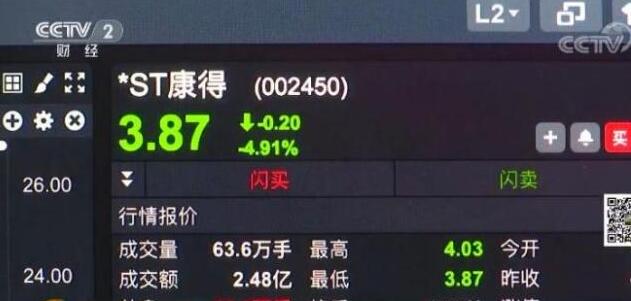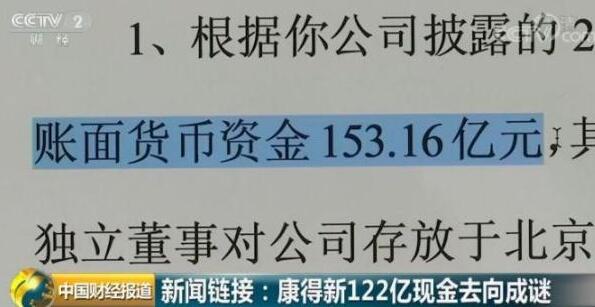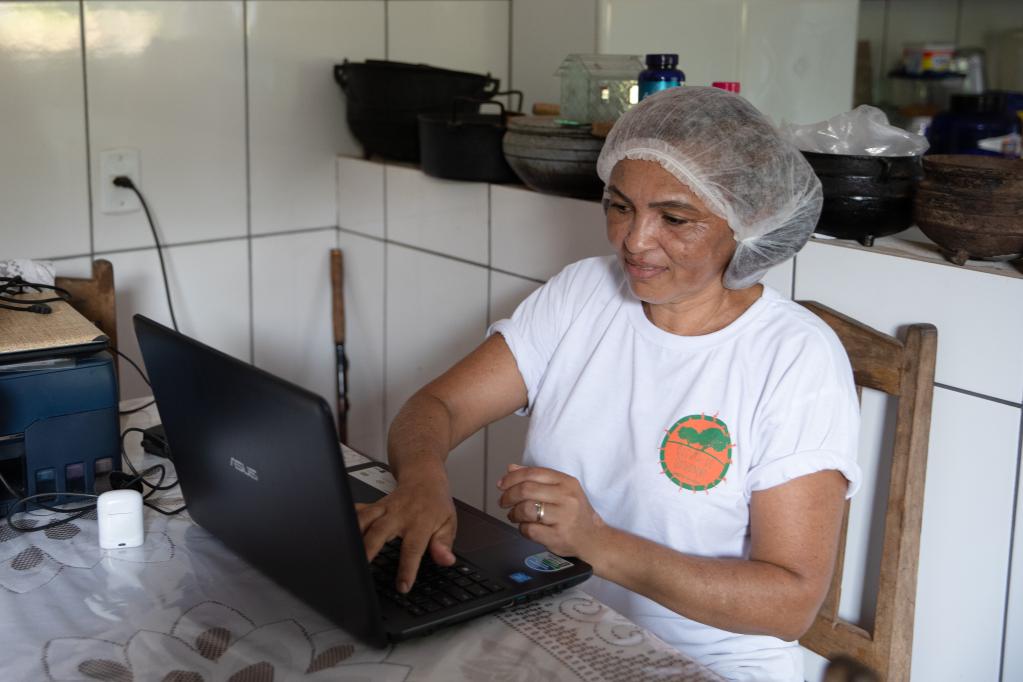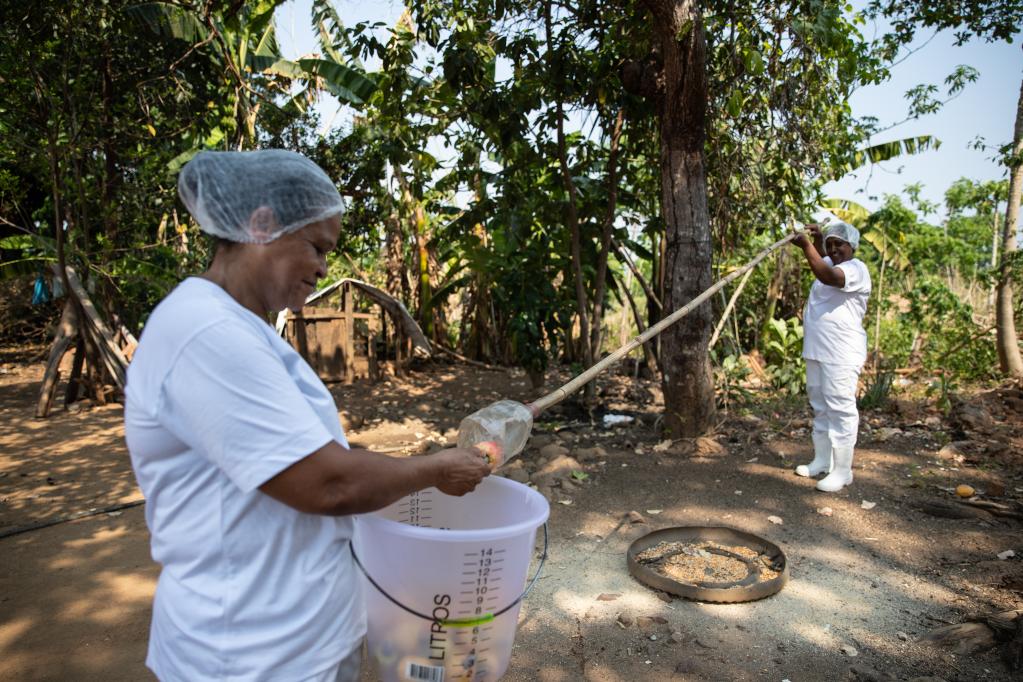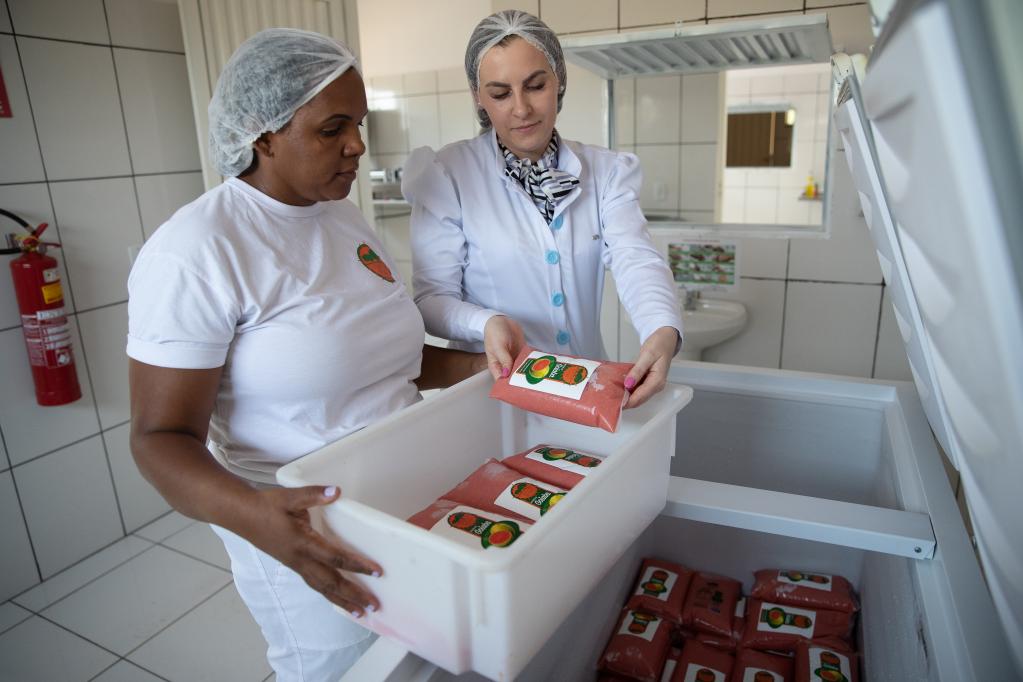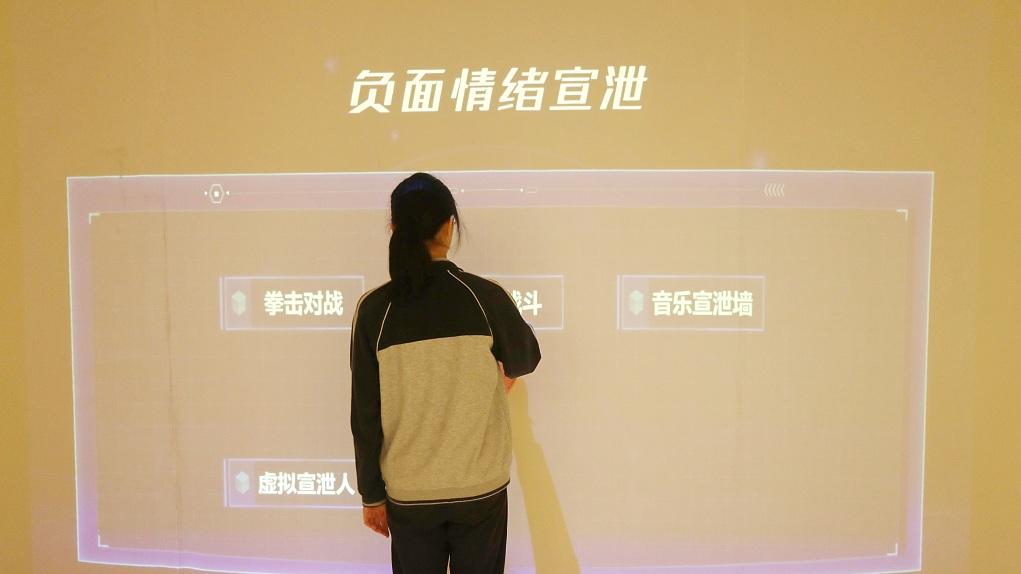Health and wellness committees, Party Committee Propaganda Department, Development and Reform Commission, Education Department (Education Committee, Education Bureau), Science and Technology Department (Bureau), Industry and Information Technology Department (Bureau), Civil Affairs Department (Bureau), Finance Department (Bureau), Human Resources and Social Security Department (Bureau), Ecological Environment Department (Bureau), Housing and Urban-Rural Construction Department (Bureau)
The National Occupational Disease Prevention and Control Plan (2021-2025) has been deliberated and adopted by the inter-ministerial joint meeting on occupational disease prevention and control, and is hereby issued to you, please implement it carefully.
National Health and Wellness Committee Propaganda Department of CPC Central Committee
Ministry of Education, National Development and Reform Commission
Ministry of Science and Technology, Ministry of Industry and Information Technology
Ministry of Civil Affairs and Ministry of Finance
Ministry of Ecology and Environment, Ministry of Human Resources and Social Security
Ministry of Housing and Urban-Rural Development Emergency Management Department
The State Council SASAC General Administration of Market Supervision
National medical insurance bureau national mine safety supervision bureau
All-China Federation of Trade Unions
December 7, 2021
National Occupational Disease Prevention and Control Plan (2021-2025)
In order to implement the decision-making arrangements of the CPC Central Committee and the State Council on strengthening occupational health work, according to the laws and regulations such as the Law on the Prevention and Control of Occupational Diseases in People’s Republic of China (PRC), the Law on Basic Medical Care and Health Promotion in People’s Republic of China (PRC), the Outline of the 14th Five-year Plan for National Economic and Social Development in People’s Republic of China (PRC) and the Long-term Goals in 2035, the Outline of Healthy China 2030 and the Healthy China Action (2019-2030), etc.
I. Current Situation and Problems of Occupational Health
Occupational health is an important foundation and part of the construction of a healthy China, which is related to the overall health and well-being of workers, economic development and social stability. The CPC Central Committee and the State Council attached great importance to occupational health work. Since the implementation of the National Occupational Disease Prevention and Control Plan (2016-2020), all regions, relevant departments and units have conscientiously implemented the spirit of the important instructions of the Supreme Leader General Secretary on occupational disease prevention and control, implemented a series of decision-making arrangements of the CPC Central Committee and the State Council on occupational health work, carried out the Healthy China Action in depth, vigorously promoted the attack on pneumoconiosis prevention and control, further strengthened the source control, and significantly enhanced the prevention and control service capacity. The monitoring scope of occupational diseases and hazardous factors has been gradually expanded, the level of rescue and work-related injury insurance has been continuously improved, the system of regulations and standards for occupational disease prevention and control has been continuously improved, and the occupational health rights and interests of workers have been further protected.
With the full implementation of the strategy of healthy China and the deepening of the construction of safe China, the protection of workers’ health is facing new situations and requirements: First, the hazards of old and new occupational diseases are increasingly intertwined, the prevention and control of occupational diseases and work-related diseases are more difficult, problems such as work stress and musculoskeletal diseases are prominent, and infectious diseases such as novel coronavirus bring new challenges to occupational health; Second, the population and fields of occupational health management and service are constantly expanding, and the contradiction between the growing occupational health needs of workers and the unbalanced development of occupational health work is prominent; Third, the support services and support capabilities for occupational disease prevention and control need to be strengthened urgently, the information construction of occupational health lags behind, occupational health professionals are lacking, and the ability of occupational health supervision and service support cannot meet the new requirements of high-quality development; Fourth, the occupational health foundation needs to be further consolidated. Some local governments’ regulatory responsibilities and employers’ main responsibilities are not implemented in place. The occupational health management foundation of small and medium-sized enterprises is weak. Some employers’ workplaces have serious hazards such as dust, chemical poisons and noise, and there are weak links in the protection of workers’ occupational health rights and interests.
Second, the overall requirements
(1) Guiding ideology.
Guided by Socialism with Chinese characteristics Thought of the Supreme Leader in the New Era, we will fully implement the spirit of the 19th National Congress of the Communist Party of China and the Second, Third, Fourth, Fifth and Sixth Plenary Sessions of the 19th National Congress, carry out occupational health protection actions in depth, implement the five-word strategy of "prevention, treatment, management, education and construction", strengthen the four-party responsibility of the government, departments, employers and workers, further consolidate the foundation of occupational health work, and comprehensively improve the quality and level of occupational health work.
(2) Basic principles.
Adhere to prevention first and combine prevention with treatment. Strengthen the prevention and control of the source of occupational hazards, urge and guide employers to take measures such as engineering technology and management, and continuously improve working conditions in the workplace. Establish and improve the technical support system for occupational disease prevention and control, and improve the ability of engineering protection, monitoring and evaluation, diagnosis and treatment.
Insist on highlighting key points and accurately preventing and controlling them. Focus on industries with serious occupational hazards, deepen the attack on pneumoconiosis prevention and control, continue to promote the control of dust, chemical poisons, noise and radiation, strengthen the monitoring and evaluation of occupational diseases and hazard factors, and achieve accurate prevention and control.
Adhere to reform and innovation and make comprehensive policies. Deepen the prevention and control of statutory occupational diseases, carry out the prevention of work-related diseases, promote the health promotion of occupational groups, comprehensively use legal, administrative, economic, credit and other policy tools, improve the working mechanism, and provide a strong guarantee for occupational health work.
Adhere to prevention and control according to law and implement responsibilities. Improve occupational health laws, regulations and standards, strengthen the construction of supervision team, and enhance the ability of supervision and law enforcement. Implement local government leadership responsibility, departmental supervision responsibility, employer’s main responsibility and individual responsibility of workers, and work together to promote occupational health work.
(3) Planning objectives.
By 2025, the occupational health management system will be more perfect, the occupational disease hazards will be significantly improved, the working conditions in the workplace will be significantly improved, the management of labor employment and working hours will be further standardized, key occupational diseases such as pneumoconiosis will be effectively controlled, the occupational health service capacity and security level will be continuously improved, the occupational health awareness of the whole society will be significantly enhanced, and the health level of workers will be further improved.
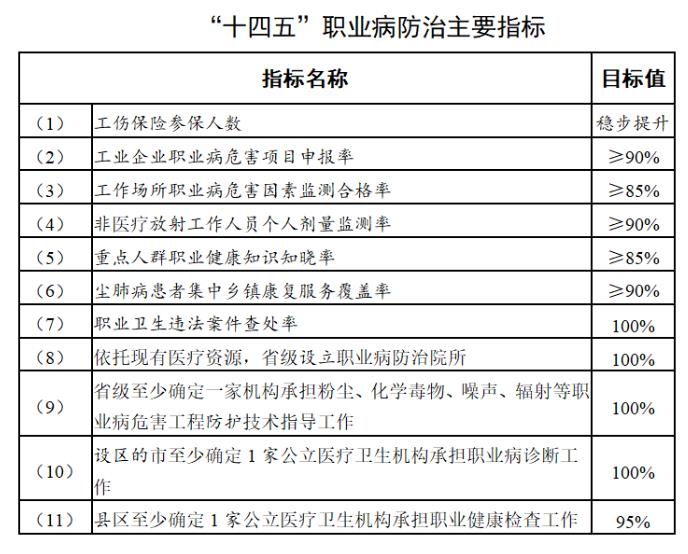
III. Main tasks
(1) Deepen source prevention and improve working conditions in the workplace.
Implement the new development concept, consider occupational health work in terms of industry planning, standards and norms, technological transformation, industrial transformation and upgrading, and assistance to small and medium-sized enterprises, so as to promote enterprises to improve their occupational health work level. Strengthen the main responsibility of the employer, and strictly implement the system of occupational disease hazard project declaration, "three simultaneities" of occupational disease protection facilities for construction projects, detection and evaluation of occupational disease hazard factors, occupational health examination and health training for workers. Focus on industries with serious occupational hazards such as dust, chemical poisons, noise and radiation, and continuously carry out monitoring and special treatment of occupational hazards. Establish an occupational health assistance mechanism for small and medium-sized enterprises, improve occupational disease protection facilities, and improve working conditions in workplaces. Strengthen the identification, evaluation, prevention and control of emerging hazards in professional activities, and carry out prevention and control work such as work stress and musculoskeletal system diseases.
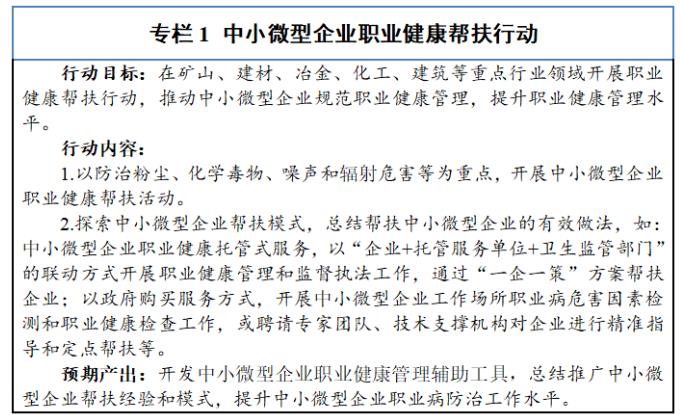
(two) strict supervision and law enforcement, improve the efficiency of occupational health supervision.
Strengthen the supervision and law enforcement of the implementation of key systems such as the declaration of occupational disease hazard projects, the "three simultaneities" of occupational disease protection facilities for construction projects, the detection and evaluation of occupational disease hazards and occupational health examination. Establish and improve the supervision mechanism with "double randomness and one openness" as the basic means, promote classified supervision and law enforcement, and explore the establishment of supervision and law enforcement in internet plus, combining on-site law enforcement with off-site law enforcement, and combining departments with double random sampling. Standardize the employment of employers, and strengthen the supervision and management of labor contracts, working hours and industrial injury insurance. We will continue to carry out collective consultation and sign special collective contracts for labor safety and health in key industries, and urge employers and workers to earnestly perform their prevention and control responsibilities. Implement the requirements for the construction of a safe China, strengthen safety supervision in industrial, mining, trade, construction, nuclear and radiation industries, promote the prevention and control of occupational diseases as a whole, and urge and guide central enterprises to take the lead in implementing the responsibility for prevention and control of occupational diseases according to law. Relying on the national enterprise credit information publicity system, improve the bad credit record of occupational health and the disciplinary mechanism of dishonesty. Smooth channels for reporting complaints, encourage social supervision, and improve the efficiency of supervision and law enforcement. In accordance with the principle of matching regulatory tasks with regulatory forces, we will strengthen the construction of occupational health law enforcement teams and law enforcement assistants, equip them with necessary law enforcement equipment and means of transportation, increase training and improve their professional level.
(3) Strengthen treatment measures to improve the level of protection for patients with occupational diseases.
Strengthen the monitoring of occupational diseases and hazard factors, improve the monitoring policy and system, expand the monitoring scope, carry out risk assessment, and improve the early warning ability. According to the principle of "diagnosis in provinces and cities, treatment in provinces, cities and counties, and basic rehabilitation", we should establish and improve the network of occupational disease diagnosis, treatment and rehabilitation, establish and improve the basic database of occupational health examination and occupational disease diagnosis, standardize the management of occupational disease diagnosis doctors, establish a team of occupational disease treatment experts, and increase the research and development of clinical diagnosis and treatment rehabilitation technologies and drugs. We will continue to implement the special action to expand the coverage of industrial injury insurance for key occupational diseases such as pneumoconiosis, and include employees in key industries with serious occupational diseases such as pneumoconiosis into the scope of industrial injury insurance according to law. Explore the establishment of a diversified financing security system for work-related diseases, gradually bring relevant occupational groups into the scope of protection, do a good job in the effective connection of relevant security systems, and do a good job in the corresponding security work according to regulations. Implement pneumoconiosis screening and follow-up, strengthen the rescue of pneumoconiosis patients, and promote the linkage of medical care, medical insurance and medicine. Implement territorial responsibility, carry out legal aid for pneumoconiosis patients who can’t clearly define the subject of responsibility, and implement policies such as medical treatment and life assistance according to regulations to reduce the medical and living burden of patients. The families of qualified occupational disease patients will be included in the minimum living guarantee in time, and those who encounter sudden, urgent and temporary basic living difficulties will be given temporary assistance in time according to regulations.
(four) to promote the construction of healthy enterprises, improve the health level of occupational groups.
Incorporate healthy enterprises into the overall deployment of healthy towns and villages in healthy cities and vigorously promote the construction of healthy enterprises. Encourage employers to establish and improve various rules and regulations related to workers’ health, build a clean, hygienic and green environment, popularize health knowledge, improve health services such as occupational health monitoring, prevention and control of infectious diseases and chronic diseases, and psychological health counseling, create a positive, harmonious and inclusive health culture, and build a number of healthy enterprises. Encourage mining, metallurgy, chemical industry, building materials, construction, transportation, environmental sanitation management and other industries, as well as medical and health care, schools and other units to take the lead in carrying out the evaluation activities of "occupational health experts", monitor and intervene the occupational health literacy of key populations, and effectively improve the health awareness and health literacy of workers.
(5) Strengthen personnel training and strengthen the construction of technical support system.
Strengthen the training of technical personnel such as occupational health testing and evaluation, engineering protection, diagnosis and treatment, and establish and improve the talent training and incentive mechanism. Establish an occupational health expert database, improve the working mechanism of experts and give full play to the role of experts. Encourage and support institutions of higher learning and vocational colleges to strengthen the professional construction of occupational health-related disciplines, incorporate the contents of occupational health education into relevant courses, and encourage clinical medicine majors to popularize occupational medical knowledge. Improve the technical support system for occupational disease prevention and control with occupational disease monitoring and evaluation, occupational disease hazard engineering protection and occupational disease diagnosis and treatment as the main body. Focusing on disease prevention and control institutions and occupational disease prevention institutes (institutes and centers), we will improve the technical support network for monitoring and risk assessment of occupational diseases and hazard factors at the national, provincial, municipal and county levels. Make full use of technical resources inside and outside the health system to build a "country — Industry (field) — Province "occupational disease hazard engineering protection technology support network. Give full play to the role of occupational disease specialized hospitals and general hospitals, and build a "national — Province — City "and extended to key counties, towns and towns of occupational disease diagnosis and treatment technology support network. Promote the construction of infrastructure, technical equipment, talent team and informatization of various technical support institutions at all levels, strengthen quality control and enhance technical support capabilities.
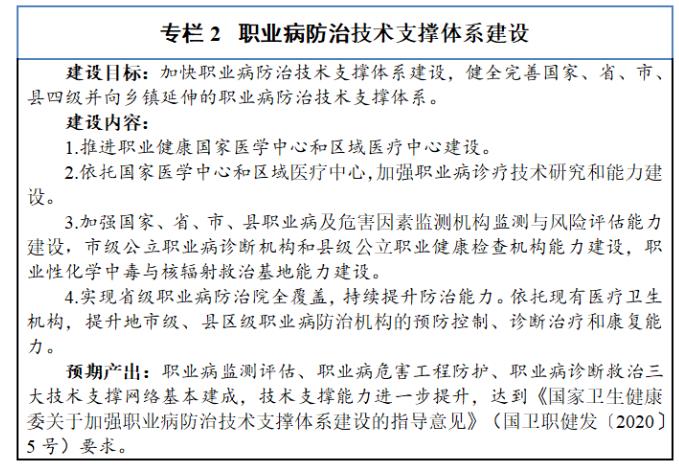
(six) to promote scientific and technological innovation and lead the healthy and high-quality development of occupation.
Promote the inclusion of key technologies and major projects of occupational health in national and local science and technology plans. Focusing on the prevention and treatment of key occupational diseases, musculoskeletal diseases and work stress, we will carry out cutting-edge basic research and research on key technologies of early screening, intervention, diagnosis and treatment and rehabilitation; Focusing on the engineering protection and treatment of occupational hazards, we will carry out research on key technologies and equipment for monitoring and protection of dust and toxic hazards and productive noise, research on key technologies and equipment for monitoring and early warning, prevention and control of occupational poisoning and emergency treatment, research on technologies and equipment for monitoring and prevention of radiation hazards, and research on key technologies and equipment for early accurate identification and rescue of large-scale nuclear and radiation accidents, forming a number of advanced technological achievements and promoting demonstration application and popularization. Promote the cooperation and co-construction of universities, scientific research institutes, enterprises and technical support institutions for occupational disease prevention and control, deepen the integration of Industry-University-Research, and break through the "bottleneck" of urgently needed technology as soon as possible. Strengthen international exchanges and cooperation in occupational health, learn from advanced experience and technology, and improve the level of occupational health supervision and occupational disease prevention and control in China.
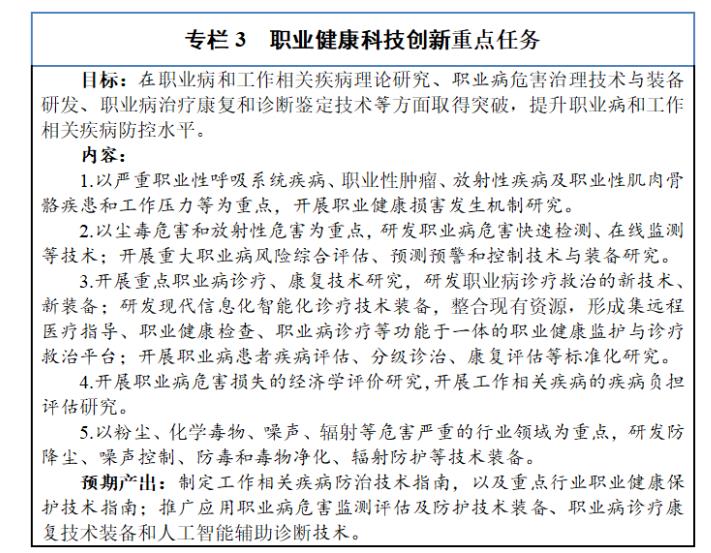
(seven) to promote information construction, improve the efficiency of occupational health management.
Incorporate occupational health informatization into the national health insurance informatization project, promote business integration and data integration, and realize cross-level, cross-regional and cross-departmental collaborative management and services. Improve the national integrated occupational health information management platform, fully integrate existing systems and data resources, and realize the interconnection of information such as occupational disease hazard project declaration, occupational disease and hazard factor monitoring, occupational health detection and evaluation, occupational health examination, occupational disease diagnosis and reporting, occupational health supervision and law enforcement, and emergency rescue. Strengthen information sharing with development and reform, industry and informatization, civil affairs, human resources and social security, ecological environment, housing and urban construction, emergency, taxation, market supervision, medical insurance and other departments, and promote the coordinated linkage of occupational health-related information. In accordance with the requirements of facilitating the people, benefiting enterprises and optimizing services, we will vigorously implement the "Occupational Health Service in internet plus". Standardize the management of occupational health information to ensure data security. Strengthen data statistics and analysis, and give full play to the role of data in occupational health supervision and decision-making.
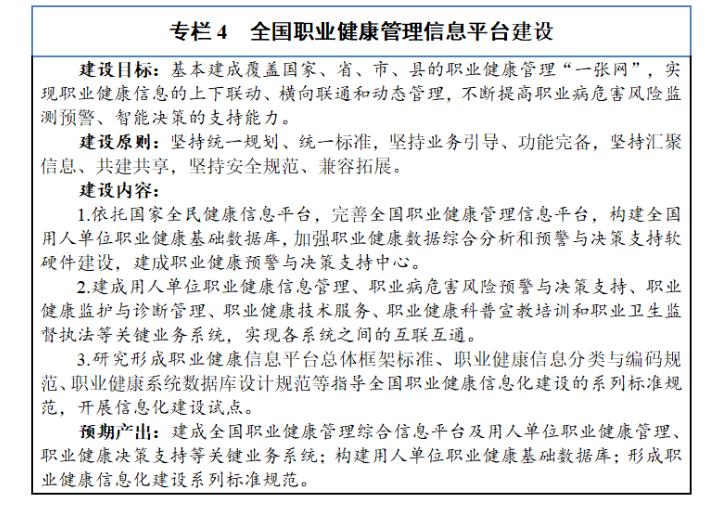
(eight) to strengthen the education and training, and enhance the awareness of occupational health in the whole society.
Continue to carry out activities such as the Publicity Week of the Law on the Prevention and Control of Occupational Diseases, vigorously carry out occupational health education and health promotion activities, and create a cultural atmosphere of concern for occupational health in the whole society. Promote the integration of occupational health education into the national education system, organize activities such as introducing occupational health knowledge into enterprises, institutions and schools, popularize occupational health knowledge, and advocate healthy working methods. Promote the establishment of occupational health science knowledge base. Implement the occupational health training project, strengthen the training of the main person in charge and occupational health management personnel of the employer, and guide and urge the employer to do a good job in training all employees exposed to occupational hazards. Promote qualified areas or employers to build occupational health experience venues, and continuously improve the awareness rate of occupational health knowledge among key groups.
Fourth, safeguard measures
(1) Strengthen organizational leadership and compact work responsibilities.
All regions should incorporate occupational health work into the overall planning of national economic and social development and people’s livelihood projects in the region, and formulate and implement occupational disease prevention and control plans. Establish and improve the assessment system of occupational health objectives and responsibilities, and promote the inclusion of occupational health-related indicators in the assessment index system of local governments at all levels. Give full play to the role of the joint meeting mechanism of occupational disease prevention and control, implement the responsibilities of departments and units such as health, development and reform, education, science and technology, industry and information technology, civil affairs, finance, human resources and social security, ecological environment, housing and urban and rural construction, emergency, SASAC, market supervision, medical security, mine safety supervision, and Federation of trade unions, and strengthen joint prevention and control to form joint efforts.
(2) Improve laws and regulations and strengthen policy integration.
Improve the system of occupational health laws and regulations, promote the revision of the Law on the Prevention and Control of Occupational Diseases and the Classification and Catalogue of Occupational Diseases, promote the prevention of work-related diseases, and further strengthen the construction of occupational health and radiation health standards. All regions should promote the establishment and improvement of local laws and regulations on the prevention and control of occupational diseases in light of the actual situation, incorporate occupational health work into the deepening of medical reform and the national health security project, and make unified planning, unified deployment, coordinated promotion and implementation. Comprehensive use of financial, social security and other policy measures, through project approval, policy support, capital guarantee and rate floating, etc., to mobilize the enthusiasm of employers to do a good job in occupational health.
(three) do a good job of funding to ensure the completion of the task.
All regions should strengthen the protection of occupational health funds, establish a diversified fund-raising mechanism for prevention and treatment, and encourage and guide social capital to invest in the field of occupational disease prevention and treatment. It is necessary to strengthen the assessment of the use of funds, improve the efficiency of the use of funds, and ensure the smooth completion of major tasks and major projects as planned.
(4) Strengthen supervision and evaluation to ensure the implementation of the plan.
All regions should study and formulate plans for the prevention and control of occupational diseases in their own regions in combination with this plan, and define the objectives, main tasks and safeguard measures for the prevention and control of occupational diseases. The Office of the Inter-Ministerial Joint Conference on Occupational Disease Prevention and Control will timely organize relevant member units to carry out special supervision on the implementation of the plan, and carry out mid-term and final assessment in 2023 and 2025 respectively to ensure that the planning objectives and tasks are completed on schedule.
Interpretation of National Occupational Disease Prevention and Control Plan (2021-2025)
The "Fourteenth Five-Year Plan" period is the first five years for China to start a new journey of building a socialist modern country in an all-round way and March towards the goal of the second century. In accordance with the decision-making arrangements of the 19th National Congress of the Communist Party of China on implementing the strategy of healthy China, the National Health and Wellness Commission and other members of the Inter-Ministerial Joint Conference on Occupational Disease Prevention and Control (hereinafter referred to as the "Plan") have studied and formulated the National Occupational Disease Prevention and Control Plan (2021-2025) according to the Law on the Prevention and Control of Occupational Diseases and the Outline of the 14th Five-Year Plan for National Economic and Social Development and the Long-term Objectives in 2035, which was reviewed and approved by the plenary meeting of the joint conference.
I. Basic Framework and Main Considerations of the Plan
The Plan consists of four parts: current situation and problems of occupational health, general requirements, main tasks and safeguard measures.
The Plan summarizes the achievements of occupational disease prevention and control during the Thirteenth Five-Year Plan period, which are mainly manifested in the following aspects: the action of tackling key problems in pneumoconiosis prevention and control has achieved remarkable results, the source control has been further strengthened, the prevention and control service capacity has been significantly enhanced, the monitoring scope of occupational diseases and hazardous factors has been gradually expanded, the level of rescue and work-related injury insurance has been continuously improved, the system of laws and standards for occupational disease prevention and control has been continuously improved, and the occupational health rights and interests of workers have been further guaranteed.
The Plan analyzes the situation faced by the prevention and control of occupational diseases during the 14 th Five-Year Plan period, which is mainly manifested in the following aspects: First, the hazards of old and new occupational diseases are increasingly intertwined, and it is more difficult to prevent and control occupational diseases and work-related diseases; Second, the field of occupational health management and service for people has been expanding, and the contradiction of unbalanced development of occupational health work is prominent; Third, the ability of occupational health supervision, technical support and service guarantee has not fully adapted to the new requirements of high-quality development; Fourth, the supervision responsibility of some local governments and the main responsibility of employers are not in place, and the occupational health management foundation of small and medium-sized enterprises is weak.
The guiding ideology of "Planning" is: under the guidance of Socialism with Chinese characteristics Thought of the Supreme Leader in the New Era, fully implement the spirit of the 19th National Congress of the Communist Party of China and the 2nd, 3rd, 4th, 5th and 6th Plenary Sessions of the 19th National Congress, carry out in-depth occupational health protection actions, implement the five-word strategy of "prevention, treatment, management, education and construction", strengthen the responsibilities of the government, departments, employers and individual workers, and further consolidate the foundation of occupational health work.
The Plan defines four basic principles, namely, insisting on prevention first and combining prevention with control; Insist on highlighting key points and accurately preventing and controlling them; Adhere to reform and innovation, comprehensive policy; Adhere to prevention and control according to law and implement responsibilities.
The goals set in the Plan are: by 2025, the occupational health governance system will be more perfect, the occupational disease hazards will be significantly improved, the working conditions in the workplace will be significantly improved, the management of labor employment and working hours will be further standardized, key occupational diseases such as pneumoconiosis will be effectively controlled, the occupational health service capacity and security level will be continuously improved, the occupational health awareness of the whole society will be significantly enhanced, and the health level of workers will be further improved.
"Planning" defined 11 main indicators of occupational disease prevention and control during the "Fourteenth Five-Year Plan" period. In terms of indicator setting, the indicators that have been completed in the 13 th Five-Year Plan period are no longer reflected in the 14 th Five-Year Plan period; Some indicators that need to be continuously promoted continue to be retained on the basis of fine-tuning; In order to reflect the new requirements of high-quality development for occupational health work, some new indicators are put forward; In order to link up with the relevant indicators of Health China Action, some indicators of occupational health protection action are also included in the planning indicators.
Second, the main tasks identified in the Plan
The "Planning" defined eight tasks and set up four columns.
First, deepen source prevention and improve working conditions in the workplace. On the one hand, it is necessary to strengthen the prevention and control of the source of traditional occupational hazards by adjusting industrial policies, implementing the main responsibility of employers, and continuously monitoring occupational hazard factors and special treatment; On the other hand, effective measures should be taken to prevent and control occupational hazards such as work stress and musculoskeletal diseases.
The second is to strictly supervise law enforcement and improve the efficiency of occupational health supervision. Strengthen supervision and law enforcement, and seriously investigate and deal with illegal acts. Standardize the employment of employers, and strengthen the supervision and management of labor contracts, working hours and industrial injury insurance. Continue to carry out collective consultation and sign special collective contracts for labor safety and health in key industries, and urge employers and workers to earnestly perform their prevention and control responsibilities; Implement the requirements for the construction of a safe China, strengthen the supervision of industrial, mining, trade, construction, nuclear and radiation industries, and promote the prevention and control of occupational diseases as a whole. Strengthen the construction of grass-roots supervision team and improve the level of standardization and specialization.
The third is to strengthen treatment measures and improve the level of protection for patients with occupational diseases. Strengthen the monitoring of occupational diseases and hazard factors, improve the monitoring policy and system, expand the monitoring scope, carry out risk assessment, implement classified supervision, and improve the early warning ability. Relying on the existing medical and health institutions to improve the network of occupational disease diagnosis, treatment and rehabilitation, and improve the ability of treatment and rehabilitation. Give play to the role of multiple insurance systems to reduce the medical burden of patients. Implement the rescue policy to ensure the basic livelihood of patients with occupational diseases.
The fourth is to promote the construction of healthy enterprises and improve the health level of professional people. Take the construction of "healthy enterprises" as an important part of the construction of healthy cities, vigorously promote the construction of healthy enterprises, and promote enterprises to fulfill relevant legal responsibilities and obligations such as occupational disease prevention and control according to law. Encourage mining, metallurgy, chemical industry, building materials enterprises, medical and health institutions, schools, public security, transportation and other units to take the lead in carrying out "occupational health experts" assessment activities.
Fifth, strengthen personnel training and strengthen the construction of technical support system. Strengthen the training of professionals in occupational health testing and evaluation, engineering protection, diagnosis and treatment, and encourage and support universities and vocational colleges to strengthen the professional construction of occupational health-related disciplines. Improve the technical support system for occupational disease prevention and treatment and the technical support network for occupational disease diagnosis and treatment.
The sixth is to promote scientific and technological innovation and lead the healthy and high-quality development of occupations. Promote the inclusion of key technologies and major projects of occupational health in national and local science and technology plans, carry out frontier basic research, research on key protection technologies and equipment, and research on key technologies of diagnosis and treatment and rehabilitation, and form a number of advanced technological achievements and popularize them.
Seventh, promote information construction and improve the efficiency of occupational health management. Incorporate occupational health informatization into the national health insurance informatization project to realize cross-level, cross-regional and cross-departmental collaborative management and service. Build a national integrated occupational health information management platform and strengthen departmental information sharing.
Eighth, strengthen propaganda and education training to enhance the occupational health awareness of the whole society. Continue to carry out the publicity week of the Law on the Prevention and Control of Occupational Diseases, vigorously carry out occupational health education, and create a good atmosphere for the whole society to care about occupational health. Implement the occupational health training project, strengthen the training of the main person in charge of the employer, occupational health management personnel and workers exposed to occupational hazards, and enhance the awareness of self-protection and rights protection according to law.
In the main tasks of the Plan, four columns are set up, such as occupational health assistance action for small and medium-sized enterprises, construction of technical support system for occupational disease prevention and control, construction of national occupational health management information platform and occupational health science and technology innovation. These four columns are mainly set up to solve the shortcomings and weaknesses that restrict the prevention and treatment of occupational diseases, and improve the service guarantee and scientific and technological support ability of occupational disease prevention and treatment.
III. Safeguard measures for the implementation of the Plan
In order to ensure the smooth implementation of the Plan, four safeguard measures were defined.
First, strengthen organizational leadership and compact work responsibilities. It puts forward clear requirements for the relevant departments of local governments at all levels and the member units of the joint meeting to do a good job in the implementation of the Plan.
The second is to improve laws and regulations and strengthen policy integration. Promote the revision of the Law on the Prevention and Control of Occupational Diseases, promote the establishment and improvement of local laws and regulations on the prevention and control of occupational diseases, and comprehensively apply policies and measures such as finance and social security to promote the prevention and control of occupational diseases.
The third is to do a good job in funding to ensure the completion of the task. All regions should strengthen the protection of occupational health funds, establish a diversified fund-raising mechanism for prevention and treatment, encourage and guide social capital to invest in the field of occupational disease prevention and treatment, strengthen the assessment of the use of funds, and improve the efficiency of fund use.
The fourth is to strengthen supervision and evaluation to ensure the implementation of the plan. The Office of the Inter-Ministerial Joint Conference on Occupational Disease Prevention and Control will timely organize relevant member units to carry out special supervision on the implementation of the Plan, and conduct mid-term and final assessments in 2023 and 2025 respectively.









